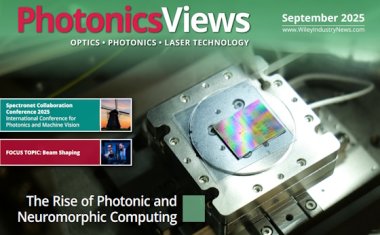Optical Metrology Basics: Triangulation
Triangulation is a trigonometric method to determine the distance between a reference point and a point of interest by aiming at the target from two different positions. In a so-called triangulation sensor this principle is put into practice and utilized for optical metrology: a laser beam is directed onto a surface at a well-defined angle of incidence, and the spot is picked up at a different angle and imaged onto a detector array. Combined with a scanner or a linear drive, the complete surface of the object may be probed and can be depicted as a point cloud in three-dimensional space. This article describes the basic features of triangulation sensors.






